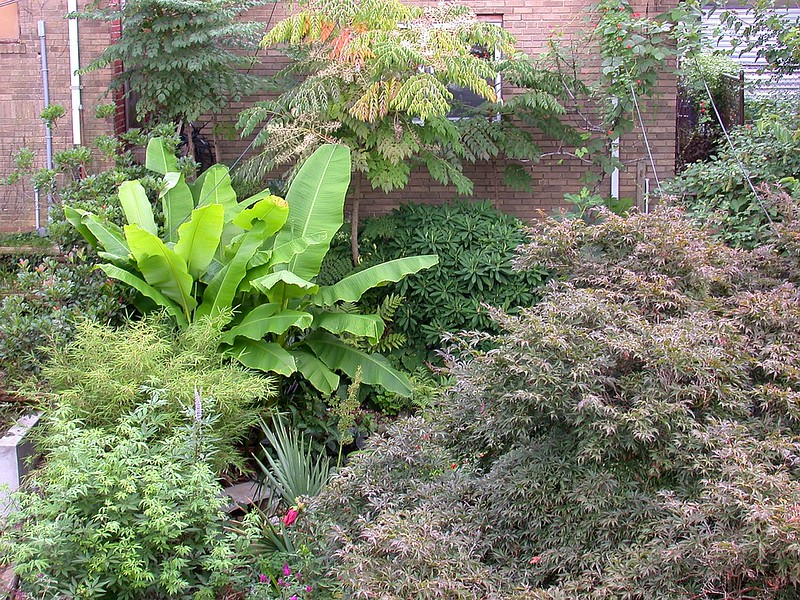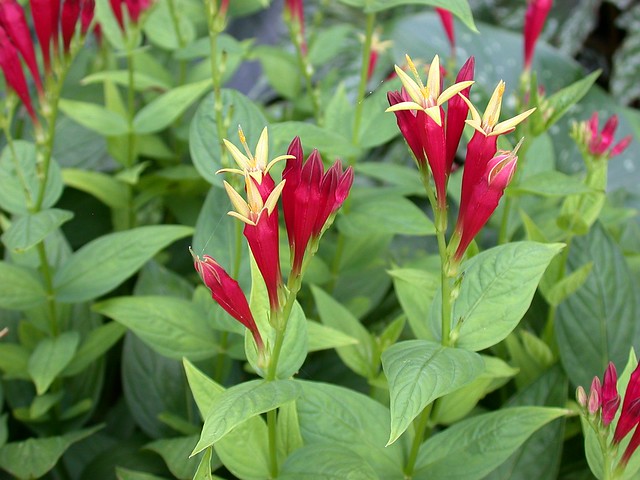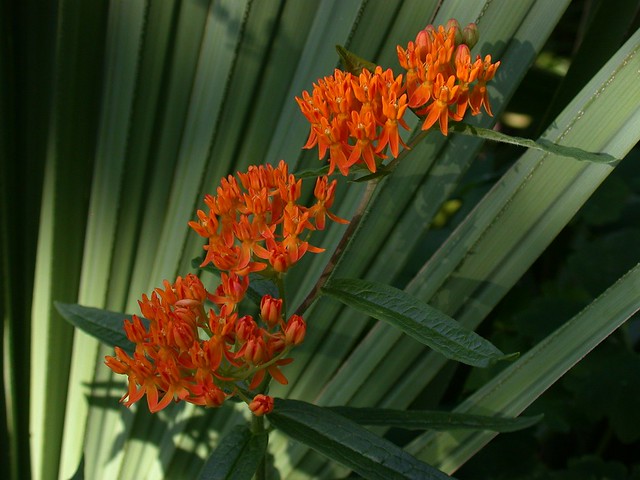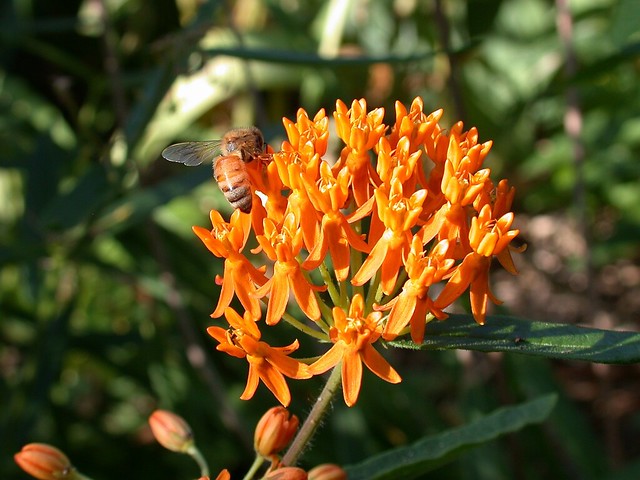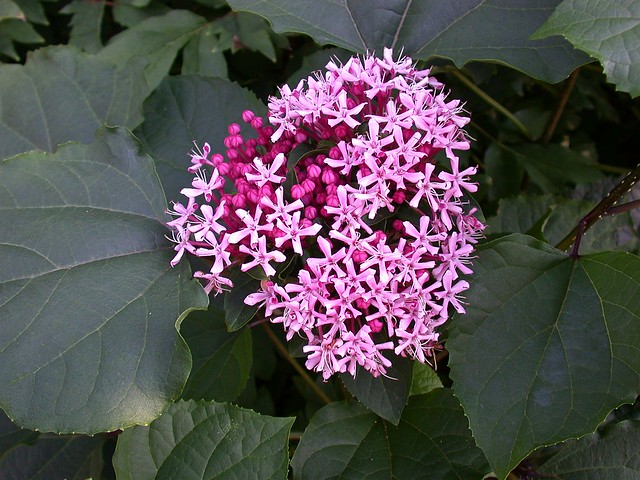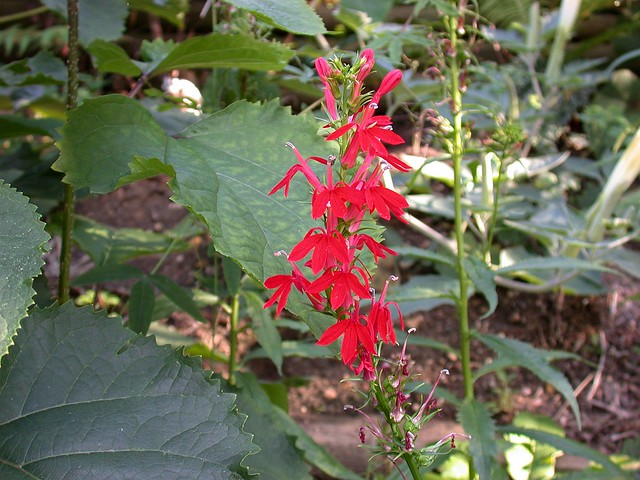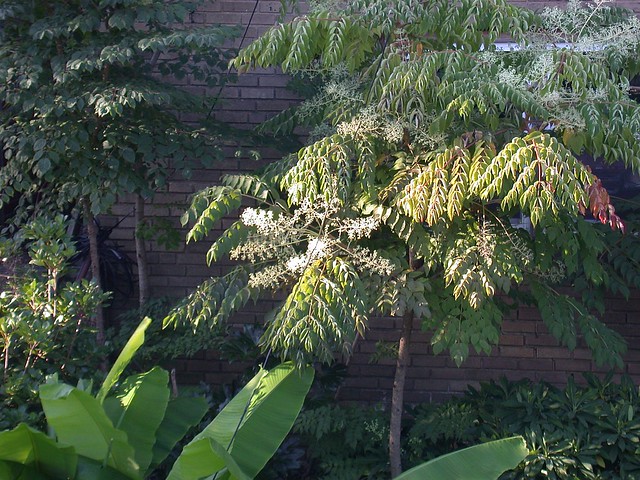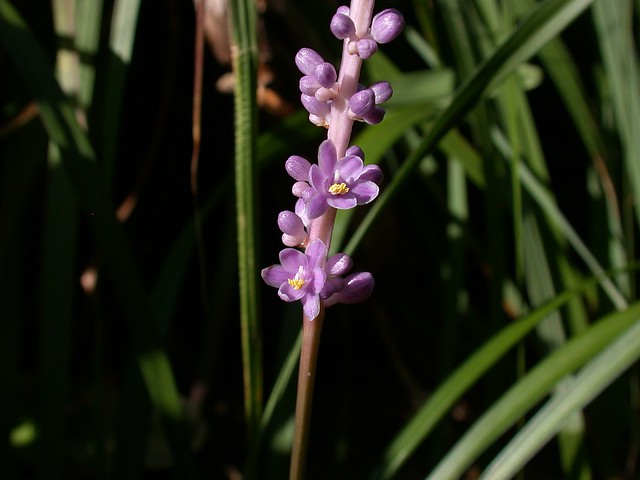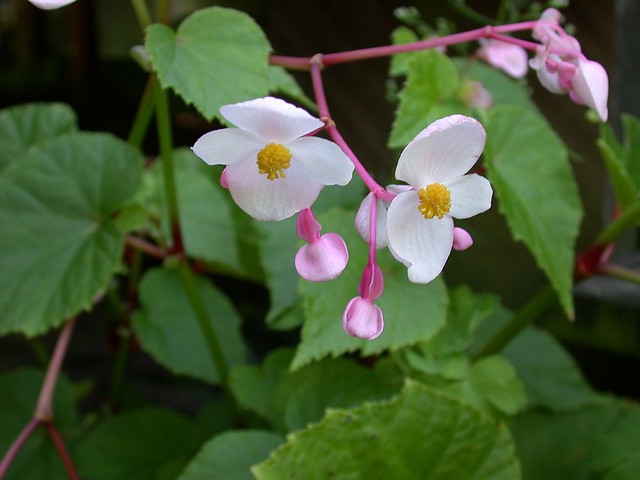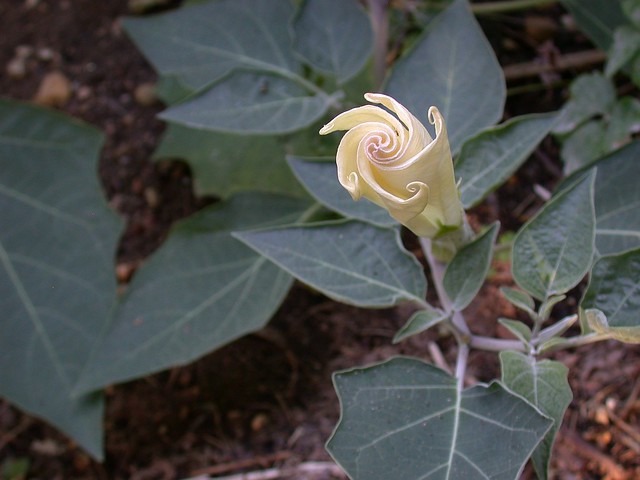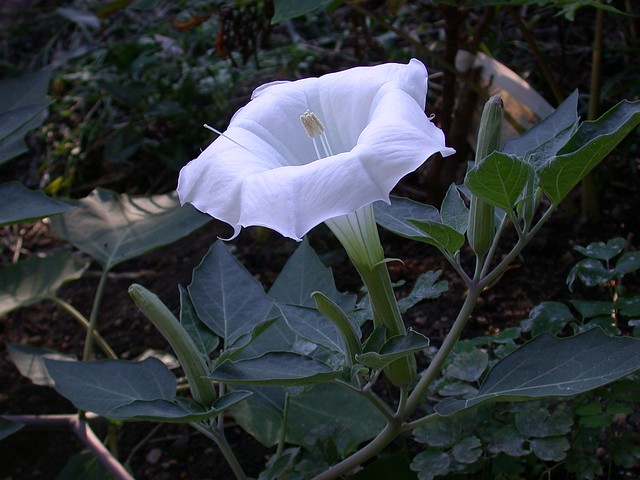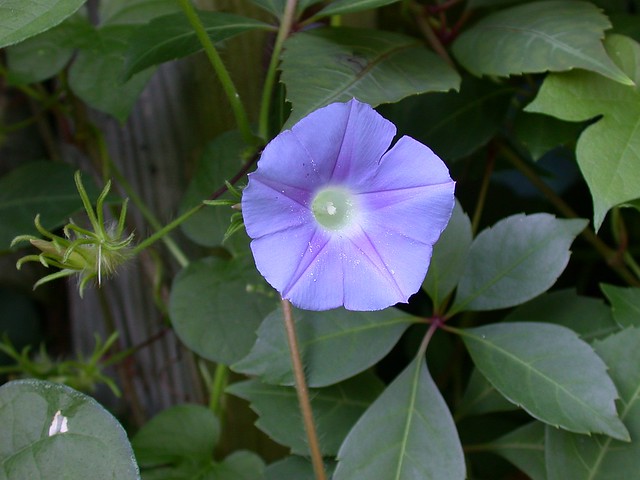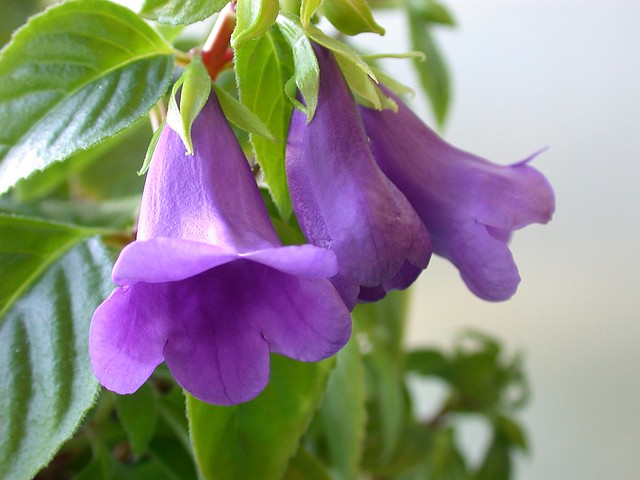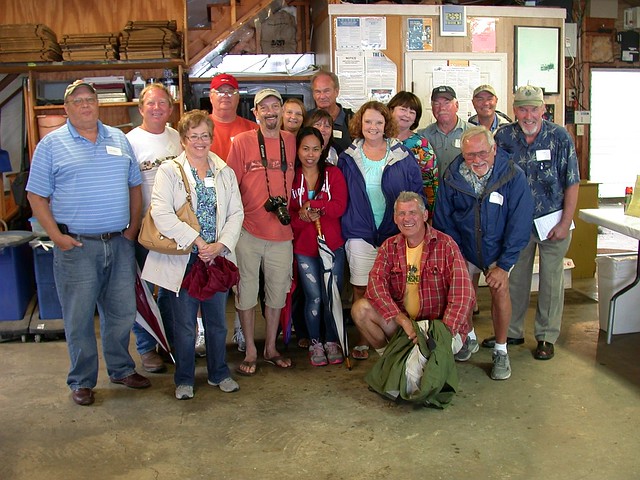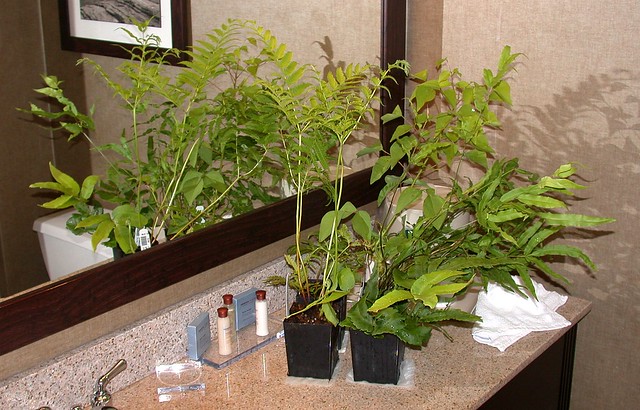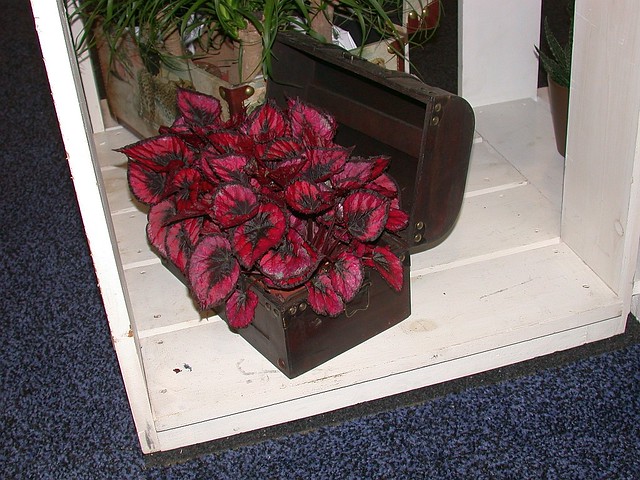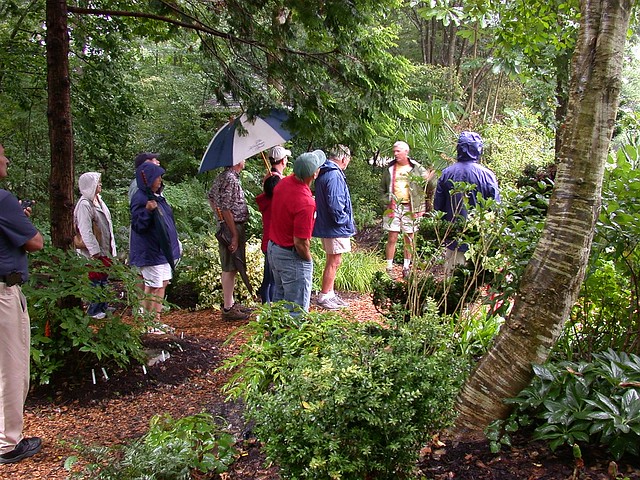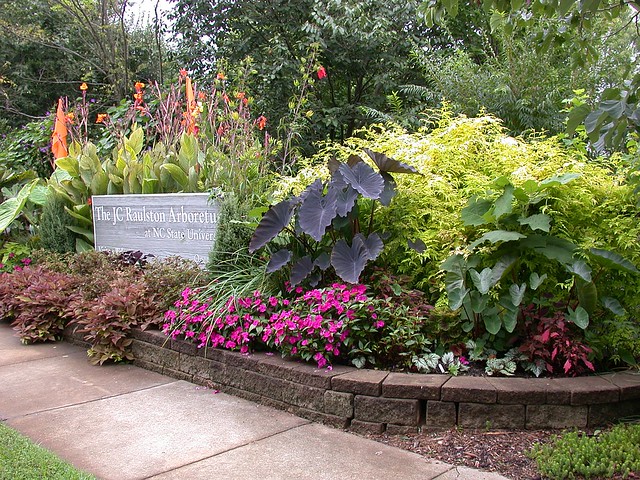
Yellowing leaves: an early sign of Basil Downy Mildew
I just harvested what will probably be my last batch of basil (
Ocimum basilicum), for what will probably be my last batch of pesto this year. This is depressing for several reasons. First, I love basil and I love pesto, and I always find the end of the basil season a bit depressing. Second, my basil usually lasts much longer, only petering out in October once nights start turning consistently chilly. But most of all, I'm depressed because I discovered that my basil has Basil Downy Mildew, a new disease that I've never encountered before, and that promises to be a major problem for basil growers--and lovers--in the next few years.
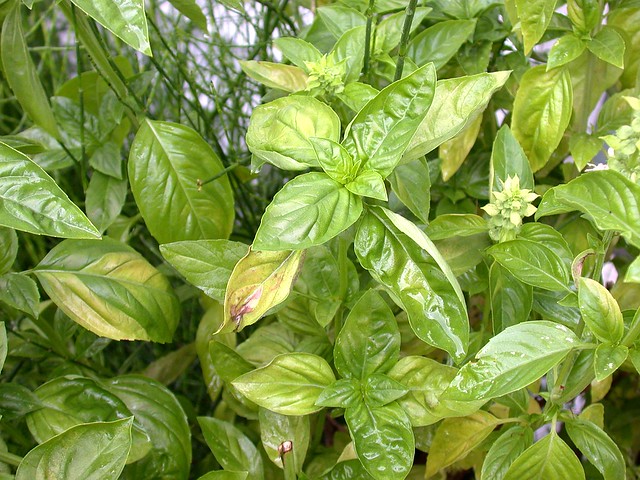
Leaf discoloration from Basil Downy Mildew
One thing I love about basil is how fast it grows, and how productive even two or three plants can be. I grow my basil in a container on my back deck, where it gets the heat and sun it loves all day long. I never start it from seed, always buying plants from a local garden center or farmer's market, and this year started like any other. The first sign that something was wrong came just a couple of weeks ago, when I noticed yellowing older leaves on my basil. But it was still vigorous and growing strongly, was yielding well, and I thought maybe I had stressed it by over- or under-watering it. Consistent watering is not my strong suit! But the yellowing progressed, the older leaves developed brown lesions and started dropping off, and younger and younger leaves were affected. When I harvested the basil I noticed a dark fuzzy discoloration on the leaf undersides, which I assumed was some kind of mildew. I still wasn't terribly concerned; I've had mildew on various garden plants, and this seems to be an especially bad year for powdery mildew on several plants that are prone to mildew anyway: peonies, columbine, and
Verbena bonariensis. I've never seen mildew on basil before, but I chalked it up to the summer being a bit cooler than usual, because basil certainly loves heat.
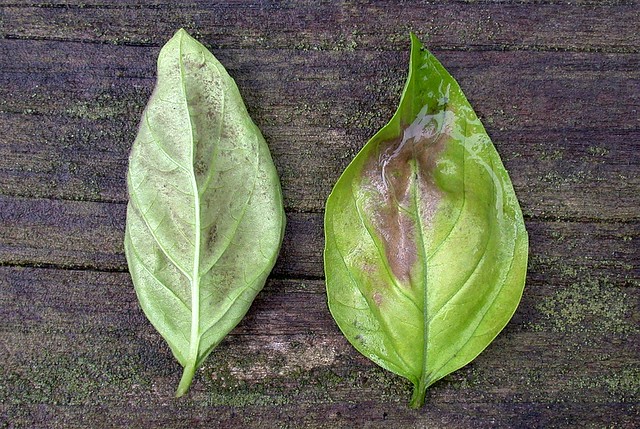
Leaves infected with Basil Downy Mildew, bottom (left) and top (right)
But the disease progressed rapidly so I did some Googling and that's when I started to get a bit alarmed. I sent photos to
Margaret McGrath, a plant disease researcher at Cornell University, who confirmed that my plants had Basil Downy Mildew (BDM). BDM is a new disease, reported in Europe in 2001 and found in the United States for the first time in Florida in 2007 but already reported from all over the country, even Hawaii. The disease spreads quickly and easily, progresses rapidly, and can wipe out a grower's entire crop of basil in a matter of weeks. Even in its early stages the plant's foliage is disfigured and ruined for commercial use. I'm lucky this is the first time I've encountered it, but this isn't likely to be the last. No basil cultivars are (yet) known to be resistant, so I suppose that gives the plant breeders one more thing to keep them busy!

Underside of leaf infected with Basil Downy Mildew
Basil downy mildew can be controlled with fungicides, but I don't use pesticides of any kind in my garden so for now I'm at a bit of a loss and don't have any tips for control. The best advice is probably to monitor plants closely and immediately remove and destroy any that show even a hint of disease. The good news is that the mildew isn't toxic to humans, although it can
and will kill your basil. More good news is that the disease probably (
probably) won't survive cold winters; but it can spread by infected seeds so if you have BDM-free plants it might be wise to save your own seeds and grow your own!
Please share this post to help get the word out about this destructive new disease! Dr. McGrath and her colleagues are gathering reports of Basil Downy Mildew so if you have it, you can report it here:
Basil Downy Mildew Monitoring Program (this link also has information on submitting samples). Has anybody else in the Washington, DC region encountered this disease?
For more info:
Expect and prepare for downy mildew in basil (Margaret Tuttle McGrath, Cornell University)
Downy mildew on basil (photos, Cornell University)
Basil Downy Mildew and the Ornamental Greenhouse (A.R. Chase, GPN)
Fungus threatens basil plants for this year and beyond (Adrian Higgins, Washington Post)
Downy mildew on basil (Nancy F. Gregory, University of Delaware)
Basil downy mildew (University of Maryland Extension)
2014 Basil Downy Mildew Outbreak Our Worst One Yet (Debbie Roos, NC Cooperative Extension)






